 Abraham Lincoln
If given the truth, the people can be depended upon to meet any national crisis...
Abraham Lincoln
If given the truth, the people can be depended upon to meet any national crisis...
 Guildford news...
for Guildford people, brought to you by Guildford reporters - Guildford's own news service
Guildford news...
for Guildford people, brought to you by Guildford reporters - Guildford's own news service
Birdwatcher’s Diary No.75
Published on: 2 Dec, 2014
Updated on: 2 Dec, 2014
By Malcolm Fincham
The inclement weather and reduced daylight hours restricted my birdwatching ventures during the last few weeks of November.
My family and I have also been deeply saddened by the unexpected loss of my brother Tony, who passed from this world after suffering from cancer and after a short spell in the Royal Surrey County Hospital on Friday November 14. This left me stunned and without inspiration for my wildlife passion.
However, with my wife forcing me out of my shell to take advantage of a few spare hours of reasonable weather and get away from funeral arrangements, she dropped me off at Thursley Common on November 20 insisting that she wouldn’t be returning to pick me up for at least two hours!
My first notable sighting there was that of several flocks of 50 or so fieldfare, with a few redwing among them as they flew over.
Although I did not have have any luck seeking out the great grey shrike that has been reported on numerous occasions since it arrive back to winter there on October 20.
While walking the path on the eastern side of what’s locally known as ‘Shrike Hill’, I was delighted to hear the scratchy sound I have heard on several previous visits this year of a Dartford warbler.
And even more so however on this occasion as he flew out from some dense gorse and sat up in a small silver birch and continued to sing his scratchy song.
Although playing hard to get and not allowing me a clear opportunity for a photo, it was the first Dartford warbler I had actually seen at Thursley since the devastating heathland fire there in 2006.
Combined with successive cold winters since, not only had they disappeared from Thursley, but there has been a worrying decline and even demise of them from many of their other Surrey heathland habitats.
Quoting from a report I wrote in July last year: ”These birds have been living in Surrey on what is some of the most northerly points of their breeding range. They have enjoyed many years of successful breeding, and at one time even increasing in numbers in some areas, with even a few pairs resident on Whitmoor Common at Worplesdon. However, due to the combination of heathland fires destroying their habitats of dense gorse in which they can find insects to feed during cold spells and several harsh winters recently.”
Choosing to pause and reflect for a few moments while looking out across a quiet backwater in Shamley Green on one of the few pleasant spells in the last week of the month, I noticed a dabchick pop up from fishing below the surface of the water and not too distant from my gaze.
Probably better known as little grebes, these birds are well known for being able to stay under water for quite long periods – as with all grebes.
Another phone call from Dougal, a top local birdwatching pal with a manically keen passion for rare bird and wildlife sightings, took me on a trip to Kent on November 30 meeting up with his long time friend John, and then along to Sevenoaks Wildlife Reserve to view an American white ibis that had been recently reported.
Expecting to see a white bird, I was rather surprised to see it was far from being one. It was, in fact, a juvenile. I realised why as it sat at the water’s edge alongside a grey heron giving a good perspective of size.
Although this bird is only native to America and is very much thought to be an escape from a private collection, it does remain a mystery why it hasn’t been tagged in any form, and a slim possibility still remains that it may have been blown off course and on to our shores just as other vagrant birds are well known to do.
To watch a You Tube clip I have uploaded of the juvenile ibis click here.
Another interesting sighting for me at the wildlife reserve was a rather dodgy looking snow goose, reminding me of a similar one I saw at Farlington Marsh near Portsmouth and reported on last December.
Responses to Birdwatcher’s Diary No.75
Leave a Comment Cancel replyPlease see our comments policy. All comments are moderated and may take time to appear.
Recent Articles
- Guildford Institute’s Crowdfunding Project for Accessible Toilet in its New Community and Wellbeing Centre
- Letter: Guildford – Another Opportunity Missed?
- Letter: GBC’s Corporate Strategy – Where Is the Ambition?
- My Memories of John Mayall at a Ground-breaking Gig in Guildford Nearly Six Decades Ago
- Westborough HMO Plans ‘Losing the Heart of the Street’ Says Resident
- College Invests to Boost Surrey’s Economy and Close Digital Skills Gap
- Community Lottery Brings Big Wins for Local Charities
- GBC Housing Plan Promises ‘A Vibrant Urban Neighbourhood’ Near Town Centre
- Hospital Pillows ‘Shortage’ at the Royal Surrey
- Updated: Caravans Set Up Camp at Ash Manor School


Recent Comments
- Ian Macpherson on Updated: Main Guildford to Godalming Road Closed Until August 1
- Sara Tokunaga on GBC Housing Plan Promises ‘A Vibrant Urban Neighbourhood’ Near Town Centre
- Michael Courtnage on Daily Mail Online Reports Guildford Has Highest-paid Council Officer
- Alan Judge on GBC Housing Plan Promises ‘A Vibrant Urban Neighbourhood’ Near Town Centre
- John Perkins on GBC Housing Plan Promises ‘A Vibrant Urban Neighbourhood’ Near Town Centre
- S Collins on GBC Housing Plan Promises ‘A Vibrant Urban Neighbourhood’ Near Town Centre
Search in Site
Media Gallery
Dragon Interview: Local Artist Leaves Her Mark At One of England’s Most Historic Buildings
January 21, 2023 / No Comment / Read MoreDragon Interview: Lib Dem Planning Chair: ‘Current Policy Doesn’t Work for Local People’
January 19, 2023 / No Comment / Read MoreA3 Tunnel in Guildford ‘Necessary’ for New Homes, Says Guildford’s MP
January 10, 2023 / No Comment / Read More‘Madness’ for London Road Scheme to Go Ahead Against ‘Huge Opposition’, Says SCC Leader
January 6, 2023 / No Comment / Read MoreCouncillor’s Son Starts Campaign for More Consultation on North Street Plan
December 30, 2022 / No Comment / Read MoreCounty Council Climbs Down Over London Road Works – Further ‘Engagement’ Period Announced
December 14, 2022 / No Comment / Read MoreDragon Interview: GBC Reaction to the Government’s Expected Decision to Relax Housing Targets
December 7, 2022 / No Comment / Read MoreHow Can Our Town Centre Businesses Recover? Watch the Shop Front Debate
May 18, 2020 / No Comment / Read More




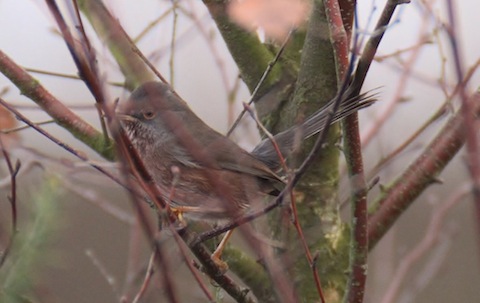

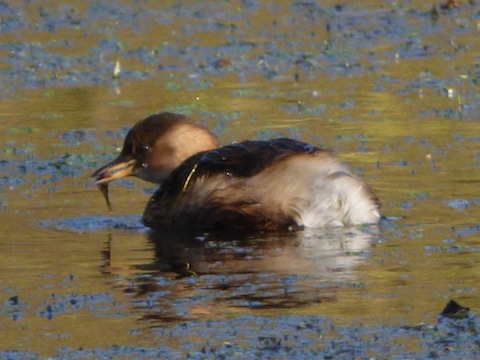
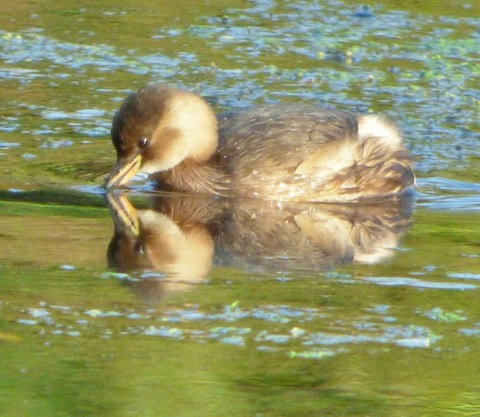
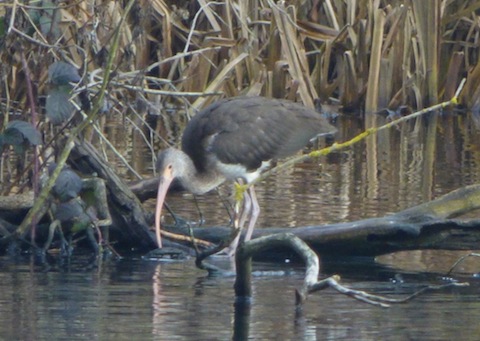


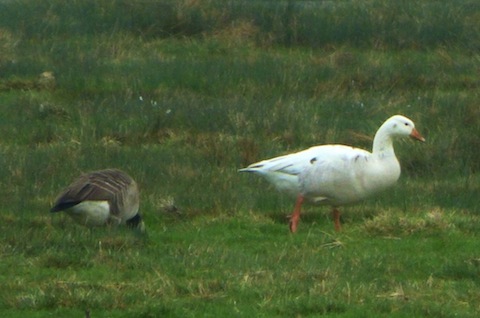
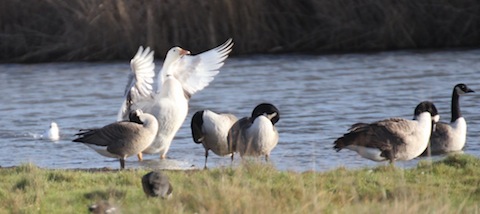






Paul Hart
December 22, 2014 at 7:21 pm
It’s always worth observing dabchicks on a sunny winter’s day.
They invariably align themselves when resting, pointing away from the sun, so the powder-puff (with black skin under it) acts as nature’s own solar heating.
Ever since Chris Packham mentioned this, I’ve confirmed it time and time again.
There is a resident family on the reservoir in front of Wisley’s glasshouse. When they breed, it’s hard to believe that such a loud call can come from such a small bird (that isn’t a kookaburra).
Malcolm Fincham
December 24, 2014 at 9:52 pm
A good point well made by Paul Hart.
And nice to read you refer to them as dabchicks rather than their more common name of little grebe. A far more fitting name I feel for such a charming little critter.
They are indeed extremely vocal for their size (click to listen) https://www.youtube.com/watch?v=kJU-vLzG1z8
I have recently noted there is one presently on Stoke Lake (see report 77).